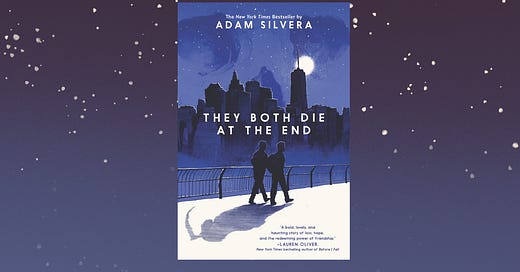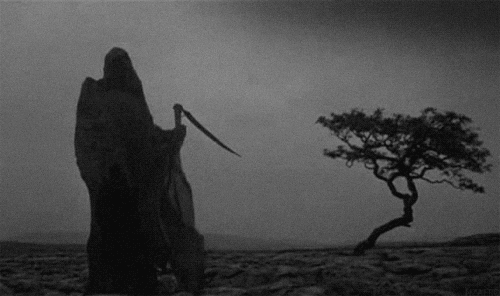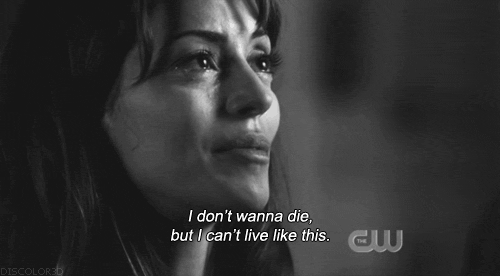They Both Die at The End (And What it Means to be Alive But Dead)
Melodrama Strung on a Red String of Faith and Hella Duct Tape
I think in the grand scheme of things this is a worthwhile book to read. It challenges our mortality and reminds us to live every day to the fullest because we don’t know when we are going to die.
Those grand and universal themes are handled with the grace of a hammer slamming into glass.
It is the main story engine, so it seems unfair to harp on Adam Silvera for reiterating that the main characters are dying every single page (the title is They Both Die at The End so if you had any other expectations or hopes for the protagonists…I’m sorry).
But such a grave (haha, get it?) theme, and one Silvera wants you to treat with gentle care and compassion is summarily thrown in your face with no real change in tone, explanation, or feeling. Death death death. The whole novel is doused in that depression and the failure of dying too young, with too much to do, with no one to share it with.
The dual protagonists manage to live their final day and enjoy it, which they took for granted before— but knowing that no matter what course of action they take they will die, is a constant emotional boundary for us, only heightened by Silvera constantly reminding us through internal or external dialogue that this cannot last. At best it will only last the day.
They are both going to die. That sucks. Everything sucks. Now they have to find a good way to live the last day of their lives to the fullest while the rest of the world goes on and refuses to stop.
There are deeply moving moments. Realizations only brought upon by the knowledge of death waving his scythe at you. Emotional pleas to no one because there is no escape. Death is the great equalizer, as literary people of history have oft said.
Mateo Torrez and Rufus Emeterio go about their final day, trying to squeeze as much enjoyment as they can and they show us it’s never too late to reach out for what you want and to hold onto those we love.
Vaguely LGBT (vaguely? I mean the characters are gay and bi, but that’s not the main point of it. They happen to be queer, but it is not a defining narrative feature for them, which I appreciated) with moments of evocative prose to ride through their last great adventure.
As beautiful as the story was wrought, with the interspersed tales of other Death Cast folk (people who got the call that they are going to die) to break the monotony and the emotion inherently there with any tragedy, I grew tired of the constant reminder that this is it.
This is the end.
This is how we die.
A patchwork quilted metaphor on being alive but not living, stitched together with duct tape.
But by god does the duct tape really hold firm.






